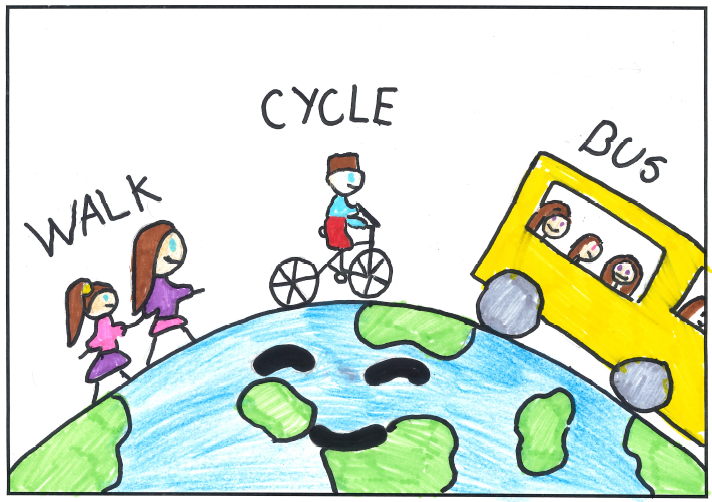A route map to achieve a 20 per cent reduction in car kilometres by 2030
Reducing car use for a healthier, fairer, and greener Scotland
A route map to achieve a 20 per cent reduction in car kilometres by 2030.

Picture by Sarah Tokou (P7), from St Mary’s Primary School in Largs.
Have your say in how we drive down our car use
Public consultation on the route map is open until 6 April 2022, we welcome all views on the route map and its approach.
Contents
2. Current situation and our approach to change
Alternative formats of report, and annex in PDF format
- View A route map to achieve a 20 per cent reduction in car kilometres by 2030
- View Annex - A route map to achieve a 20 per cent reduction in car kilometres by 2030
- View Gaelic Version - A Route Map To Achieve A 20 Per Cent Reduction In Car Kilometres By 2030
- View Easy Read Version - A Plan To Use Cars Less So We Have A Healthier, Fairer And Greener Scotland
Foreword
 We are delighted to jointly present Scotland’s draft route map to achieve a national reduction in car kilometres, in order to enable healthier, fairer and more sustainable lives.
We are delighted to jointly present Scotland’s draft route map to achieve a national reduction in car kilometres, in order to enable healthier, fairer and more sustainable lives.
The route map is published in response to the Scottish Government’s Climate Change Plan update commitment to reduce car kilometres by 20 per cent by 2030, to meet Scotland’s statutory obligations for greenhouse gas emissions reduction by 2045. However it also recognises the benefits that re-thinking the way we travel can have on our individual and community health and wellbeing, as well as the fairness of our society and the inclusiveness of our economy.
The route map builds on the vision for Scotland's transport system set out in the second National Transport Strategy, aimed at protecting our climate and improving our lives. However, it acknowledges that people’s travel behaviours are shaped by the wider context in which they live and services they need to access. Our route map to reduce car use therefore includes a range of non-transport policies interventions, including the provision of good connectivity and digital access to services; the way we plan and invest in our public places; where we locate key services such as healthcare; and how we support our children and young people to make healthy, fair and sustainable travel choices from an early age.
The route map does not aim to eliminate all car use. We recognise that would not be realistic or fair, especially for journeys undertaken by disabled people or in rural areas where sustainable travel options may not always be available or practical. Rather, the route map encourages all of us to reduce our overreliance on cars wherever possible and identifies four key behaviours that we want everyone in Scotland to consider each time we plan a journey:
- make use of sustainable online options to reduce your need to travel;
- choose local destinations to reduce the distance you travel;
- switch to walking, wheeling, cycling or public transport where possible; and
- combine a trip or share a journey to reduce the number of individual car trips you make, if car remains the only feasible option.
The route map sets out the interventions we are putting in place to make it easy for people to take these actions.
The Scottish Government and COSLA have co-developed the route map in recognition of the need for joint ambition and action at both a national and local level. We have also sought input from key groups and networks to try to ensure it reflects the needs and aspirations of people across Scotland. The draft route map is now published for public consultation. Beyond the consultation period we are committed to continuing a national conversation on sustainable travel, working collaboratively with regional and local partners, as well as businesses, communities and individuals, to take urgent action to address climate change in a fair and inclusive way.
Implementation of the actions in this route map will help transform the way we live in Scotland by 2030. In addition to meeting our climate change commitments we will experience a new localism in our villages, towns and city neighbourhoods; communities and places that are safer for people of all ages to travel by walking, wheeling and cycling, while acknowledging a more limited level of car use will continue, especially for those who are disabled or live, study and/or work in some rural and remote locations; longer journeys that are predominantly made by convenient and affordable public or shared transport; and greater use of sustainable online access to key services and opportunities, where appropriate. By reducing car use we will create a healthier, fairer and greener Scotland for everyone.